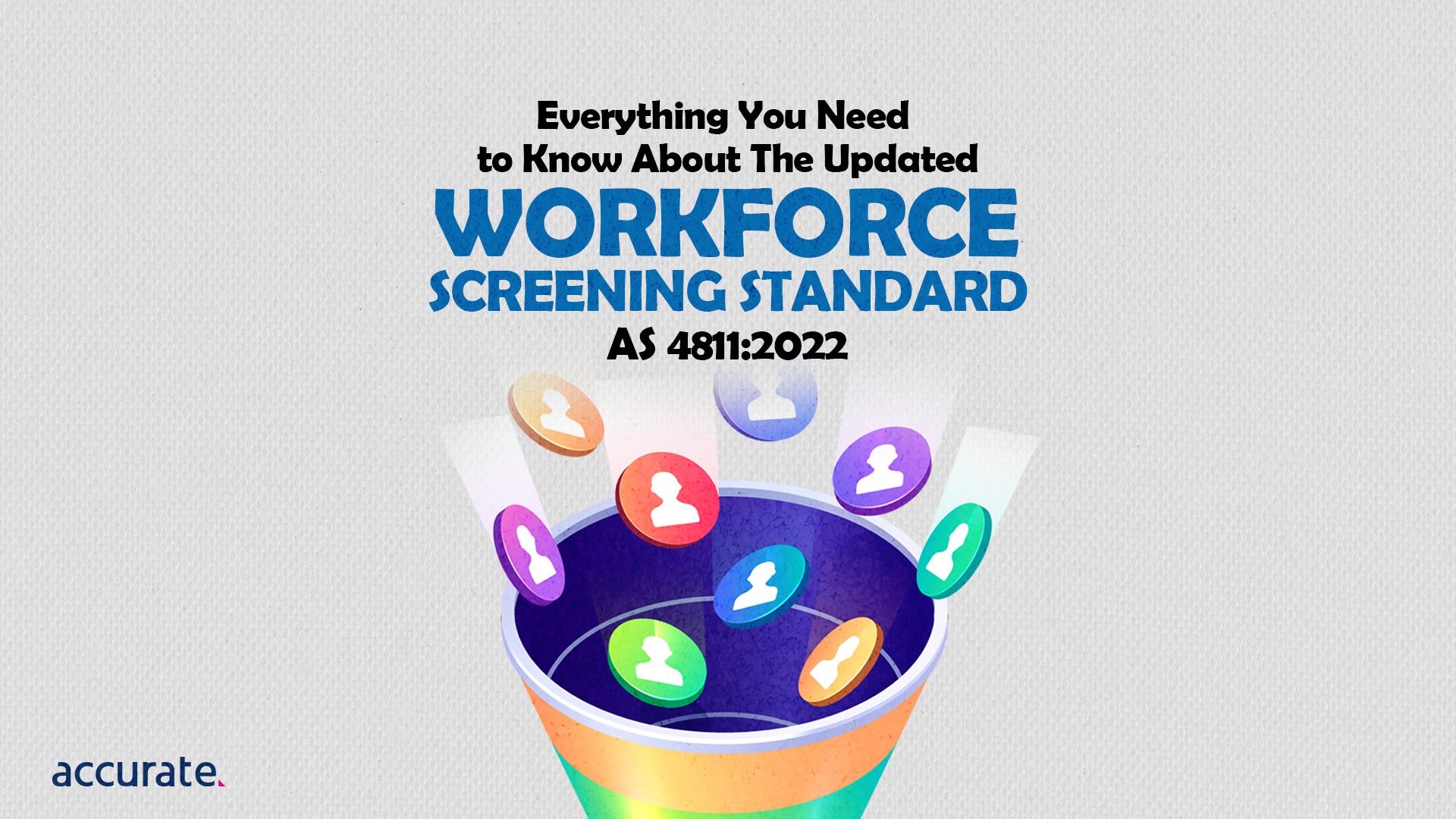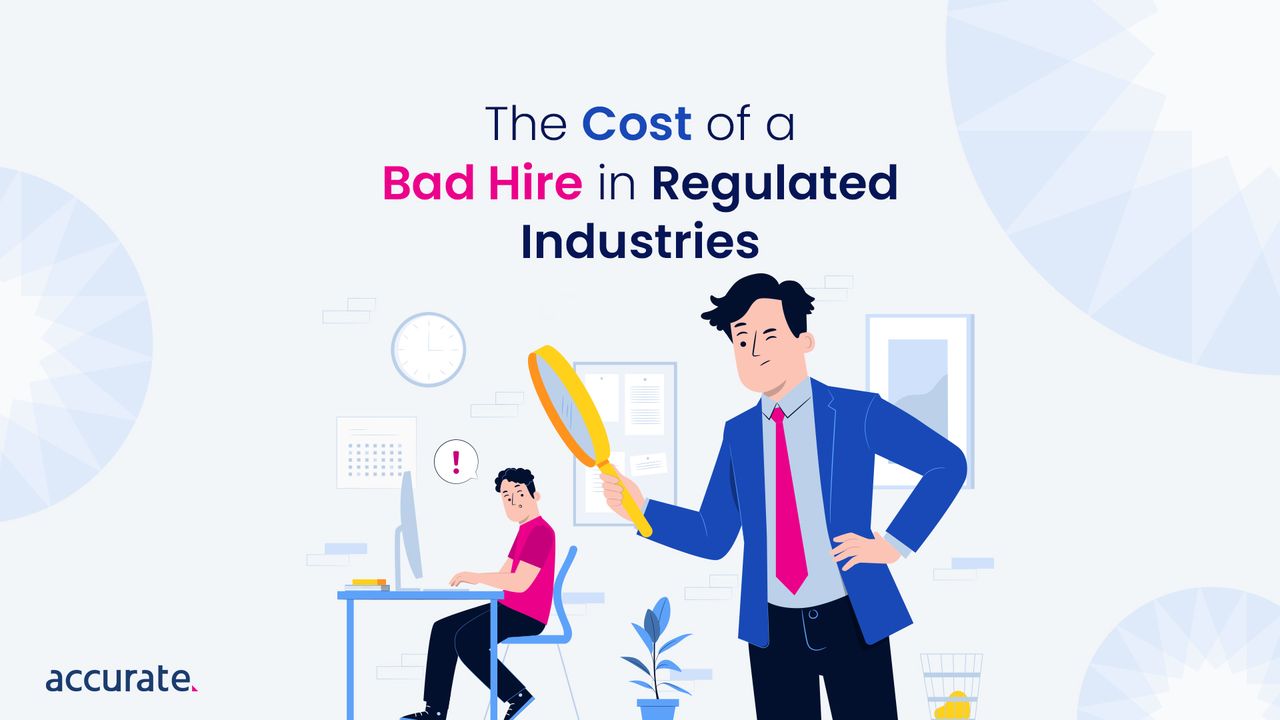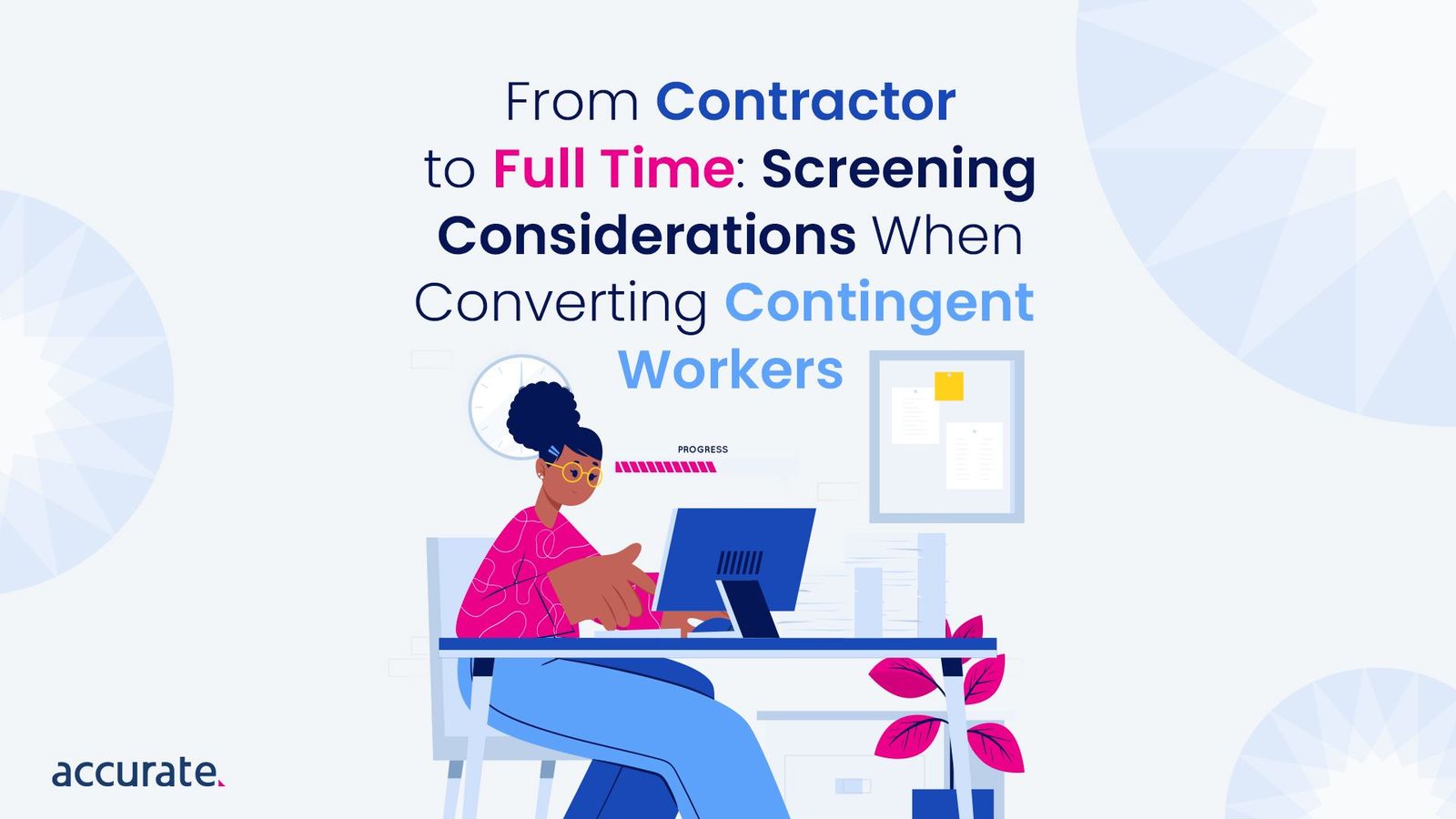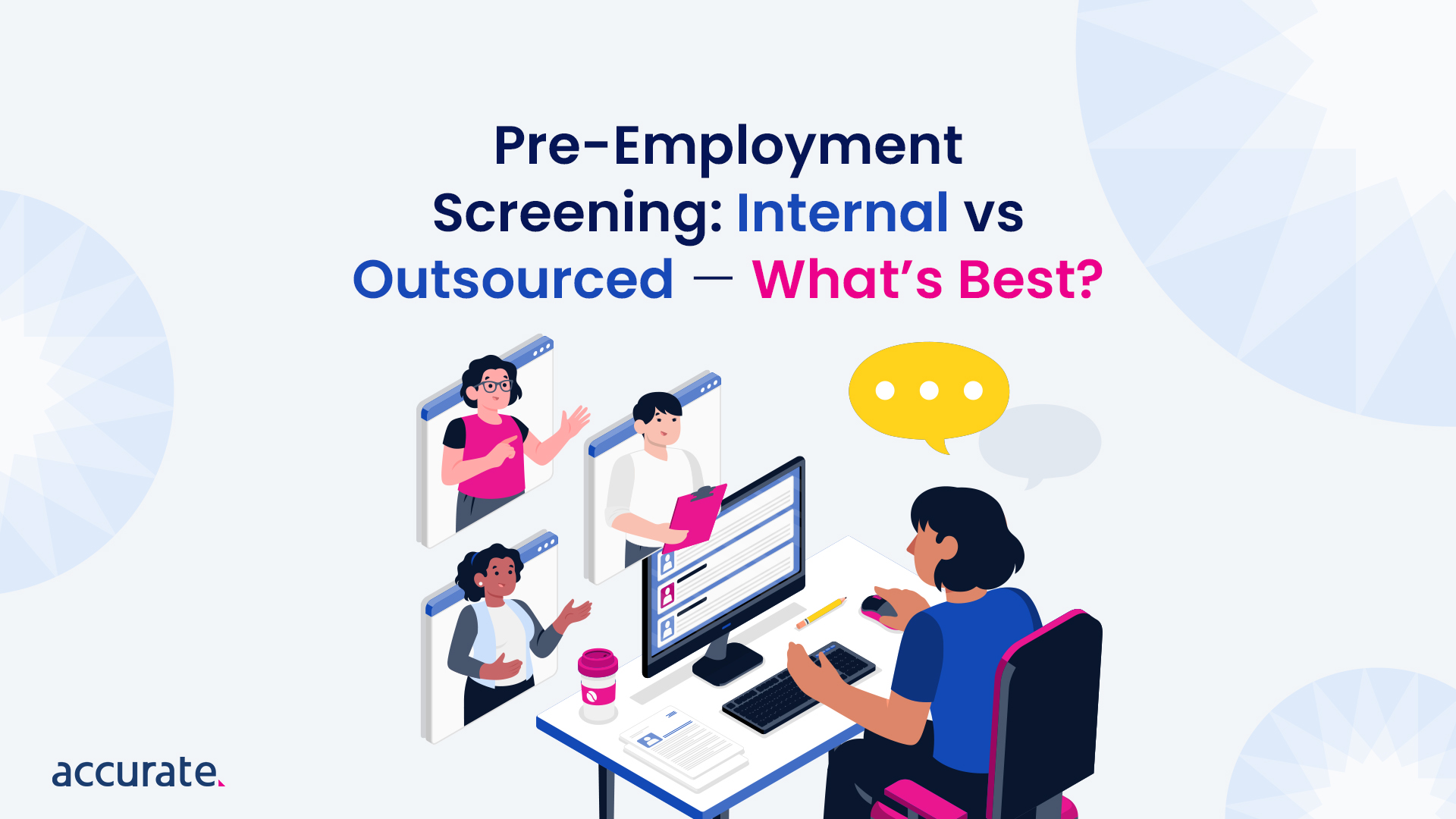Any business owner knows that the strength of their company lies in the quality of their employees. But, unfortunately, according to a 2018 report published by the NSW Independent Commission against Corruption (ICAC), 20% to 30% of job applications contain some form of false information.
A key component of mitigating the risk of hiring fraudulent candidates is including pre-employment screening as part of the hiring process.
But, when it comes to pre-employment screening, there is no one-size-fits-all solution. The process needs to be tailored to the specific needs of your organisation. A good place to start is by creating a framework that outlines the steps you need to take to ensure a thorough and effective screening process.
This will help you to avoid any potential pitfalls and ensure that you are doing everything possible to identify the best candidates for the job.
To help employers establish an organisation-specific screening framework, Standards Australia published the Australian Standard for Employment Screening in 2006. The guide was intended to build a workable framework for pre-employment screening.
And while the document has been used as a best-practice guide amongst business owners, hiring managers, and other HR professionals, a lot more risk has become prevalent over the last decade that the document does not address. So, it became necessary to remedy outdated sections of the document and include a new approach to the various ways in which risk has evolved.
We strongly advise that all companies familiarise themselves with the new Workforce Screening Standard AS 4811:2022 document to ensure that your employment screening framework is on par with the recommended standards.
But, to help you navigate the differences between the 2006 guide and the updated 2022 guide, we’ve compiled a list of some of the key changes to look out for.

Changes to the Objective of the Document
One of the most notable differences between the 2006 employment screening guide and the latest update is the contents of the preface:
| Employment Screening AS 4811:2006 | Workforce Screening Standard AS 4811:2022 |
| “A thorough employment screening process is considered to be a highly effective way of minimising and guarding against some potential risks. The objective of the screening process is to reduce the risk of a potential security breach and to ensure the integrity, identity, and credentials of personnel within an organisation.” | “The objective of this document is to set out requirements and guidance for the development of organisational-specific workforce screening policies and processes. Workforce screening is a risk-based approach that provides an organisation with a level of ongoing assurance around the eligibility and suitability of an individual to access organisation assets to help achieve the organisation’s objectives.” |
The difference between each document’s preface seems to imply that the objective in the more recent update of the guide is wider in scope than in the original document.
More specifically, while the 2006 employment screening standard was only focused on security risk, integrity, identity, and credentials, the 2022 update establishes the need to broaden the framework to include assurances around the candidate’s suitability for the job and within the company.
The idea is to ensure that organisations focus on different aspects when putting together an employment screening framework. Risk management is one key consideration, but it’s also important to keep in mind the bigger picture and how background screening can support other organisational objectives. For example, when hiring new staff, screening can be used to identify individuals who have the skills and experience needed to help achieve the organisation’s goals.

The 2022 Workforce Standard is Much Longer
| Employment Screening AS 4811:2006 | Workforce Screening Standard AS 4811:2022 |
| 17 pages | 40 pages |
The new version of the employment screening standard guide contains over twice as many pages as the previous iteration, and includes a new section on workforce screening principles, the screening process, and privacy and confidentiality. There is also an expanded section on personnel employed in screening.
While the increase in page count may seem daunting, the expansion of content is designed to help businesses ensure that they are carrying out their screenings in a thorough and fair manner.
Additional Section: Workforce Screening Principles
While the 2006 employment screening document included specific guidance in relation to workforce screening, the 2022 Workforce Standard has expanded on this with the addition of the screening principles section, which sets out overarching heuristics to guide the formulation of organisational specific systems and processes.
These principles include practical considerations such as ensuring that your organisation’s workforce screening programme:
- is effective and efficient;
- meets agreed performance levels;
- is reviewed periodically on a predetermined schedule or for cause; and
- is continuously improved.
The section also includes ethical guidance, such as ensuring that your screening framework recognises the “unique circumstances of each candidate or entrusted person and takes into account their requirements and rights in all aspects of the process.”
The team at Accurate Background were very pleased to see that the updated Workforce Standard includes a section on ethical principles. One particular ethical principle that stood out to us is establishing workforce screening processes and practises that support mutual trust.
This is something that we feel strongly about at Accurate Australia and it forms the basis of our mission, which is to “help organisations build a trusted workforce.”
Additional Section: The Screening Process
The updates to the screening standard include a new clause on the process of workforce screening. This clause provides a high-level overview of the process for performing workforce screening, including a step-by-step outline of the process. The process outlined in the new clause includes steps for identifying risks, assessing individuals, and making decisions about suitability.
The basic requirements for workforce screening are also discussed in detail, including the need to identify a list of appropriate checks, a clear sequence of actions for conducting the checks, and when to conduct the necessary steps.
Additional Section: Confidentiality and Privacy
Pre-employment screening checks are a necessary part of the hiring process for many employers. However, it is important to maintain confidentiality and respect the privacy of the candidates being screened. There are several ways to do this, such as ensuring that only authorised personnel have access to the information collected and stored it securely.
The Australian Standards have included a separate section in the new update to highlight the importance of including best practices to maintain confidentiality and privacy in your organisation’s screening framework.
Expanded Section: Personnel Employed in Screening
In the original version of the screening standard guide, there was only a small section (less than half a page) focused on principles to guide the HR professionals and hiring staff that carry out the employment screening process. However, in the updated version of the document, it contains a full page dedicated to managing personnel employed to do screening work.
For example, the expanded section now has a list of desired behaviours and characteristics of screening staff, which outlines such considerations as observing the “highest standards of integrity and conduct” in discharging their duties. Assessors are also encouraged to avoid discrimination of any kind.
The choice to expand the guidance beyond just the basic job description shows a growing focus on ensuring integrity throughout the entire screening process as a means to create mutual trust. And while this is intended for application to internal staff, the principles should also be upheld by third parties engaged in the same work function, such as employment screening agencies.
For this reason, Accurate Australia is proud to be a member of the Professional background Screening Association, which is the global peak industry body that exists to advance excellence in the screening profession. Accurate Australia CEO Khai Ngo is the Chair of the APAC Education Ccommittee and consistently provides insights and engages with colleagues across the world.

Key Takeaways
The release of the new Workforce Screening Standard by Standards Australia is a welcome development for businesses and screening agencies across the country. The standard provides clear guidance on best practises for workforce screening in light of the new ways to address risk management in the hiring process.
Here at Accurate Australia, we can work with your talent acquisition team to tailor your hiring process to ensure that it is guided by the updated standards contained in the Workforce Screening Standard AS 4811:2022.
Our mission is to support organisations in building a reliable, secure and trusted workforce.
To find out how we can help you with establishing your employment screening framework, get in touch with us today.



